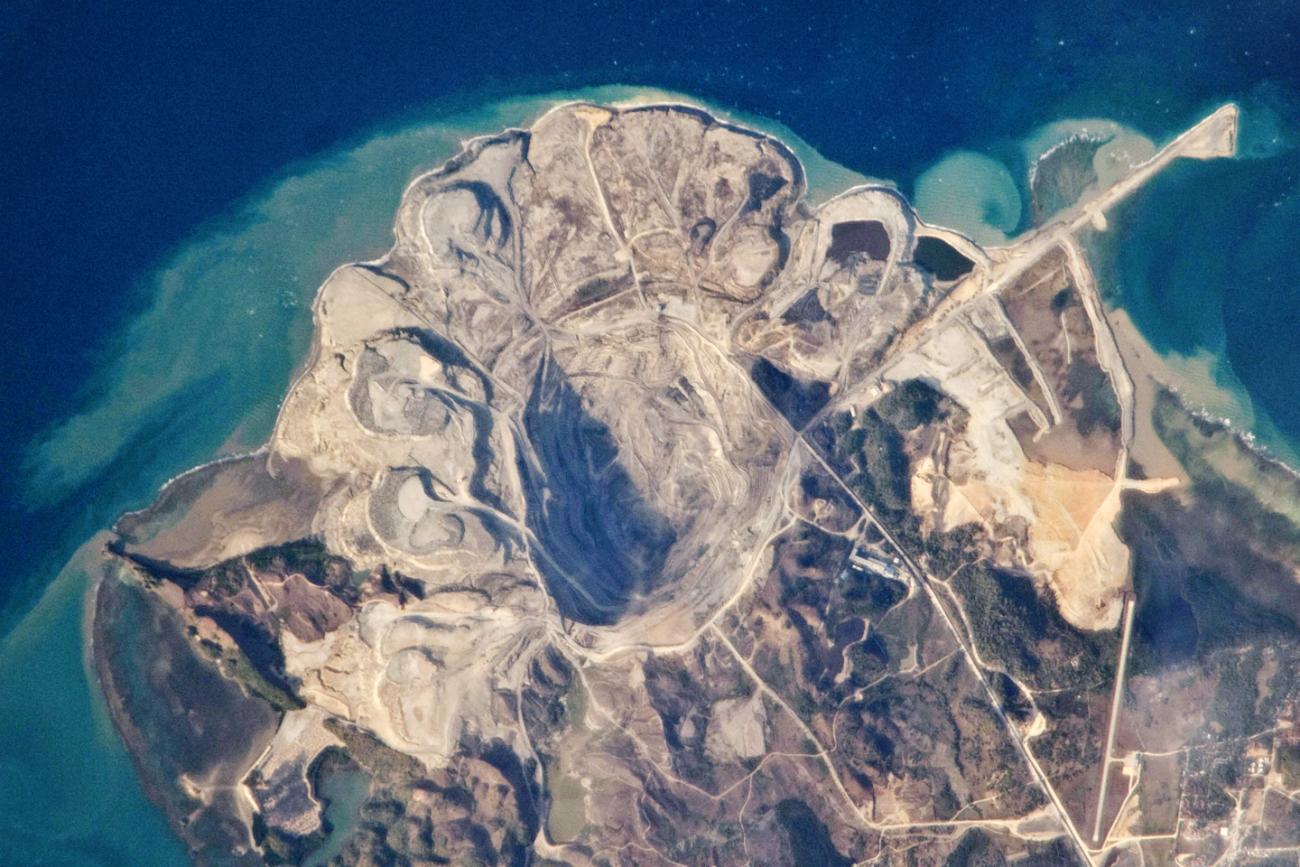The death of at least six coal mine workers in Semirara Island in Antique last July 17 indicates that coal mining is another health risk that cannot be ignored, said environmental health organization Health Care Without Harm-Asia.
As of July 20, three remain missing, believed to have been buried after an open pit coal mine collapsed as a result of a landslide. The Department of Energy already ordered the suspension of operations in the country's largest coal mine site.
“Most of the time, the impacts of coal combustion on human health, such as respiratory diseases resulting from air pollution, receive the greatest attention,” stated Dr. Renzo Guinto, campaigner of HCWH-Asia’s Healthy Energy Initiative. “However, we should not forget that the earlier phases in the life cycle of coal – such as mining and transport – also have their own health effects that need to be addressed.”
Detailed astronaut photograph of the northern end of Semirara Island (Public domain photo from Wikipedia)
“Coal mining, whether it is underground or open cut, is inherently a dangerous occupation,” added Dr. Guinto. “For instance, accidents due to landslides, such as what occurred in Semirara, are just some of the occupational health risks faced by coal miners.”
Other risks posed to the health of coal miners include: injuries from machinery; respiratory illness as a result of exposure to silica, coal dust and other toxic fumes; heat stress; and hearing loss due to prolonged exposure to loud noise resulting from explosions.
In 2002, a global review of 250 studies on coal mining revealed that up to 12% of coal miners develop fatal lung conditions called pneumoconiosis and silicosis due to the inhalation of dust during mining operations. The same report also noted that small scale mines, many of which are found in developing countries, are often more hazardous due to poorer safety precautions, resulting in higher rates of accidents and injuries.
Another report from the Climate and Health Alliance in Australia showed that in a single coal mine alone, more than 1,800 mine workers have been killed due to various reasons since mining operations began.
Dr. Guinto therefore urged that in order to take into account the hidden health costs of energy choices, particularly coal, a life cycle analysis needs to be conducted.
“The health effects of coal are felt not just when we burn it, but also when we extract it from the ground and transport it from one location to another. If we want the complete picture, the whole life cycle of coal – from the mine to the chimney – must be assessed,” exhorted Dr. Guinto.
For additional reading:
Stephens C, Ahern M. Worker and community health impacts related to mining operations internationally. A rapid review of the literature. London: Mining and Minerals for Sustainable Development Project, 2001. http://pubs.iied.org/pdfs/G01051.pdf
Climate and Health Alliance. Coal and health in the Hunter: Lessons from one valley for the world. Victoria: CAHA, 2015. http://caha.org.au/wp-content/uploads/2015/02/CAHA.CoalHunterValley.Report.FINAL_.Approvedforprint.pdf
